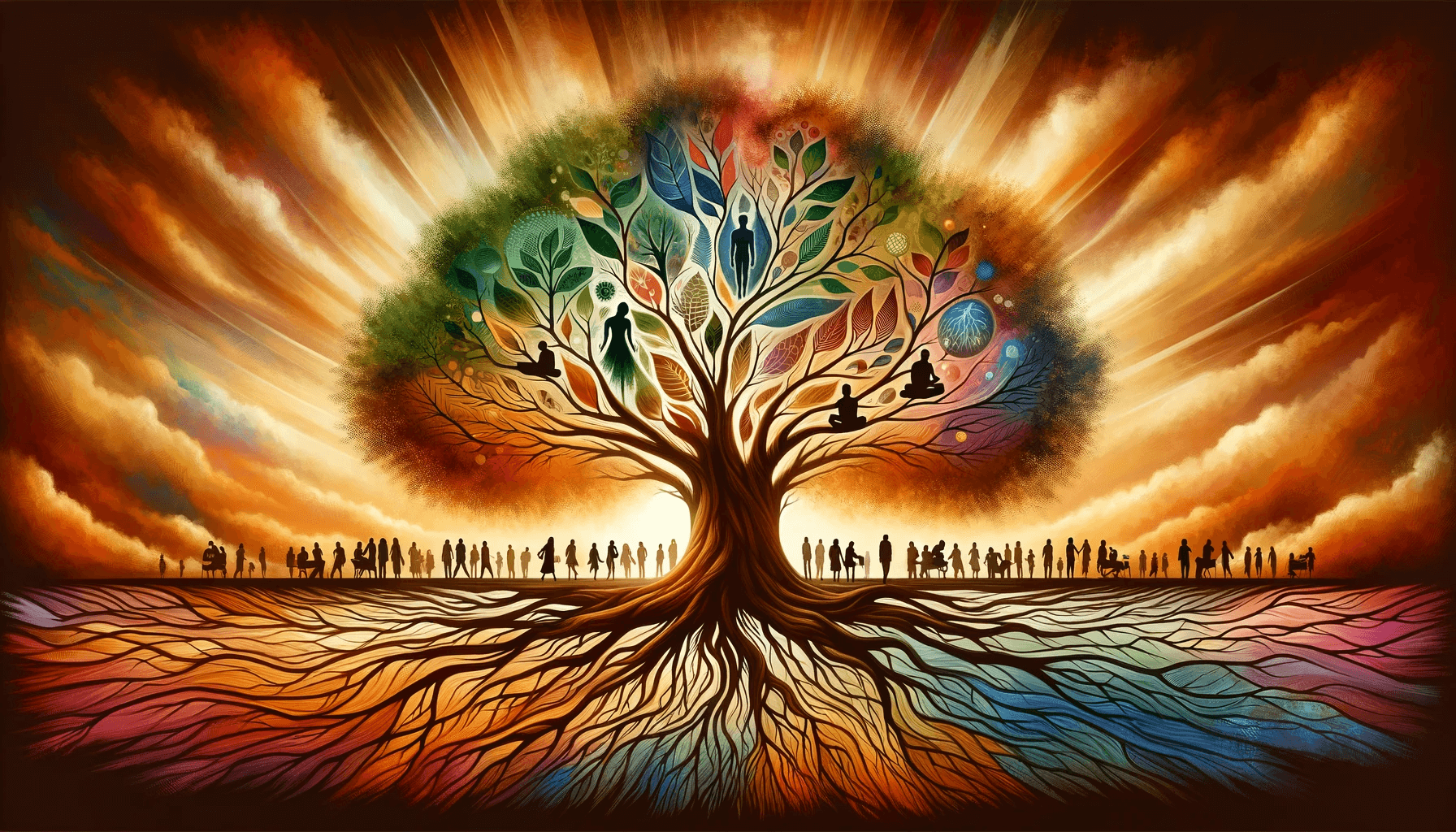Sponsored By Vibration Tracks
Table of Contents
Understanding the Concept of Non-Reaction
In today’s fast-paced and often stressful world, it is easy to find ourselves caught up in reactions to the various situations that arise. We react to the actions and words of others, to unexpected events, and even to our thoughts and emotions. This constant reactivity can affect our mental well-being and overall happiness. However, there is an alternative approach that can lead to a happier and more fulfilling life – non-reaction.
Non-reaction is consciously choosing not to react to external stimuli or internal thoughts and emotions. It involves stepping back from the automatic response patterns that have become ingrained in us and, instead, observing without judgment. By cultivating non-reaction, we can break free from the cycle of negative emotions and find a greater sense of peace and contentment.
The Impact of Non-Reaction on Mental Well-being
The impact of non-reaction on our mental well-being cannot be overstated. When we react to every situation and stimulus that comes our way, we allow external circumstances to dictate our internal state. This constant reactivity can lead to feelings of stress, anxiety, and overwhelm. On the other hand, when we practice non-reaction, we take back control over our emotional state. We become less affected by the ups and downs of life and more resilient in the face of adversity.
Non-reaction also allows us to cultivate greater inner peace and happiness. Observing our thoughts and emotions without getting caught up in them creates space for positive states of mind to arise. We become more present and aware, able to experience the beauty and joy in each moment fully. This way, non-reaction becomes a powerful tool for enhancing our well-being and finding true happiness.
The Benefits of Practicing Non-Reaction
Practicing non-reaction offers a multitude of benefits that can transform our lives. One of the key benefits is increased self-control. When we learn to pause before reacting, we allow ourselves to choose a more skillful response. We can avoid saying or doing things we regret later and respond with kindness and compassion.
Another benefit of non-reaction is improved relationships. When we react impulsively, we often say or do things that hurt others or damage our connection with them. Practicing non-reaction can break this cycle and foster healthier and more harmonious relationships. We become better listeners, more empathetic, and more understanding of others’ perspectives.
Furthermore, non-reaction allows us to let go of past hurts and resentments. When we hold onto grudges and grievances, we keep ourselves in a negative cycle. Practicing non-reaction can release these negative emotions and find forgiveness and healing. This frees up mental and emotional space for more positive experiences and relationships to enter our lives.
Techniques to Cultivate Non-Reaction in Daily Life
Cultivating non-reaction requires practice and intention. Here are some techniques that can help you incorporate non-reaction into your daily life:
- Mindful Breathing: When faced with a challenging situation or an emotional trigger, take a moment to focus on your breath. Notice the sensation of the breath entering and leaving your body. This simple act of mindfulness can pause stimulus and response, allowing you to choose a more skillful reaction.
- Self-Reflection: Regularly reflect on your thoughts, emotions, and reactions. Notice any patterns or triggers that cause you to react unconsciously. You can break free from these patterns and choose a different response by bringing awareness to them.
- Journaling: Writing down your thoughts and emotions can be a powerful tool for cultivating non-reaction. Journaling allows you to observe your inner world without getting caught up. It provides an outlet for processing and releasing negative emotions, allowing you to respond from a place of clarity and calm.
- Practicing Mindfulness: Engage in activities that promote present-moment awareness, such as meditation, yoga, or nature walks. These practices can help you develop the habit of being fully present in each moment rather than getting lost in thoughts and reactions.
Letting Go of Past Hurts and Resentments
One of the most challenging aspects of non-reaction is letting go of past hurts and resentments. Holding onto grudges and grievances can keep us stuck in a cycle of negativity and prevent us from moving forward. However, practicing non-reaction can release these negative emotions and find forgiveness and healing.
One technique for letting go of past hurts is forgiveness. Forgiveness does not mean condoning or forgetting the actions of others, but rather, it is a choice to release the emotional burden that comes with holding onto resentment. By forgiving others, we free ourselves from the negative energy that keeps us trapped in the past.
Another technique is gratitude. By focusing on the positive aspects of our lives and practicing gratitude, we shift our perspective from what went wrong to what is going right. This shift in mindset can help us let go of past hurts and resentments and cultivate a greater sense of peace and contentment.
Lastly, self-compassion is essential in the process of letting go. We must be kind and compassionate towards ourselves, acknowledging that we are human and bound to make mistakes. By extending this compassion to ourselves, we can release the self-judgment and self-blame that often accompany past hurts and resentments.
Dealing with Challenging Situations Without Reacting
Challenging situations are inevitable, and our ability to navigate them without reacting is crucial for our well-being. When faced with a challenging situation, it is essential to remember that we have a choice in how we respond. Here are some strategies to help you deal with difficult situations without reacting:
- Take a Pause: When faced with a challenging situation, take a moment to pause and collect your thoughts. This pause allows you to respond from a place of clarity and calm rather than reacting impulsively.
- Empathy and Understanding: Try to put yourself in the other person’s shoes and understand their perspective. This empathetic approach can help diffuse tension and create a more constructive dialogue.
- Active Listening: Instead of immediately jumping in with your thoughts and opinions, practice active listening. Give the other person your full attention and try to understand their point of view before responding.
- Choose Your Battles: Not every situation requires a reaction. Learn to pick your battles and let go of the need to be right or have the last word. Sometimes, walking away and preserving your peace of mind is better.
Embracing Mindfulness and Present-Moment Awareness
Mindfulness and present-moment awareness are essential components of non-reaction. By cultivating these qualities, we can become more attuned to the present moment and less caught up in our thoughts and reactions. Here are some ways to embrace mindfulness and present-moment awareness in your life:
- Meditation: Set aside time each day for formal meditation practice. Depending on your schedule, this can be as little as 10 minutes or as long as an hour. Use this time to sit silently, focusing on your breath or a specific focus point. As thoughts arise, observe them without judgment and return your attention to the present moment.
- Mindful Eating: Slow down and savor each bite of your meals. Pay attention to the flavors, textures, and smells of the food. This simple act of mindfulness can help you become more present and appreciative of the nourishment your food provides.
- Body Scan: Take a few moments each day to scan your body from head to toe, noticing any areas of tension or discomfort. As you become aware of these sensations, breathe into them and consciously relax the muscles. This practice can help you develop greater bodily awareness and release physical tension.
- Mindful Walking: During your daily walks, bring your attention to the sensation of your feet hitting the ground, the movement of your body, and the sounds and smells around you. Engaging all your senses in this way can anchor you in the present moment and cultivate a sense of peace and calm.
The Role of Self-Awareness in Mastering Non-Reaction
Self-awareness plays a crucial role in mastering non-reaction. Without self-awareness, we cannot recognize our reactivity patterns or our reactions’ impact on ourselves and others. Here are some ways to cultivate self-awareness:
- Reflection: Take time each day to reflect on your thoughts, emotions, and reactions. Notice any patterns or triggers that cause you to react unconsciously. You can break free from these patterns and choose a different response by bringing awareness to them.
- Mindful Observation: Practice observing your thoughts and emotions throughout the day without getting caught up in them. Imagine yourself as a witness, simply observing the activity of your mind without judgment. This practice can help you develop greater self-awareness and detachment from your thoughts and emotions.
- Feedback: Seek feedback from trusted friends, family members, or mentors. Ask them to honestly share their observations of your reactivity and how it affects them. This feedback can provide valuable insights into your blind spots and help you better understand yourself.
- Journaling: Regularly write in a journal to explore your thoughts and emotions. This practice can help you gain clarity and insight into your reactivity patterns. It also provides an opportunity for self-reflection and self-expression.
Overcoming Common Obstacles in Practicing Non-Reaction
While the practice of non-reaction offers many benefits, it has its challenges. Here are some common obstacles you may encounter and strategies for overcoming them:
- Habitual Reactions: Reacting to situations has become a deeply ingrained habit for many of us. Overcoming this habit requires conscious effort and practice. Whenever you catch yourself reacting automatically, pause and remind yourself of the benefits of non-reaction. With time and consistency, you can rewire your brain to respond skillfully and intentionally.
- Emotional Triggers: Certain situations or people may trigger strong emotional reactions in you. Recognize these triggers and practice self-awareness in these moments. Step back and observe your thoughts and emotions without getting caught up. Remind yourself that you have a choice in how you respond and consciously choose a more skillful reaction.
- Fear of Being Misunderstood: One common obstacle in practicing non-reaction is the fear of being misunderstood or taken advantage of. It is important to remember that non-reaction does not mean passivity or allowing others to walk over you. It is about choosing a response that is rooted in wisdom and compassion. Communicate your boundaries assertively and respectfully while still maintaining a non-reactive stance.
- Impatience: The practice of non-reaction requires patience and persistence. It is something that takes time to be mastered. Be gentle with yourself and allow yourself to make mistakes along the way. Each moment is an opportunity to practice non-reaction; with time, it will become more natural and effortless.
The Transformative Power of Non-Reaction for a Happier Life
The practice of non-reaction has the power to transform our lives in profound ways. By consciously choosing not to react, we can break free from the cycle of negative emotions and find a greater sense of peace and contentment. We become less affected by external circumstances and more resilient in adversity.
Non-reaction also allows us to cultivate healthier and more harmonious relationships. Observing without judgment and choosing skillful responses can foster understanding, empathy, and connection with others. We become better listeners and more compassionate individuals.
Moreover, non-reaction lets us let go of past hurts and resentments, freeing up mental and emotional space for more positive experiences and relationships. It allows us to live in the present moment, fully experiencing the beauty and joy surrounding us.
In conclusion, the power of letting go and mastering non-reaction cannot be underestimated. By understanding the concept of non-reaction, practicing mindfulness, embracing self-awareness, and overcoming common obstacles, we can unlock the transformative power of non-reaction and create a happier and more fulfilling life.
Conclusion and Final Thoughts
The practice of non-reaction is a powerful tool for enhancing our mental well-being and overall happiness. By letting go of automatic reactions and cultivating mindfulness and present-moment awareness, we can break free from the cycle of negative emotions and find a greater sense of peace and contentment. Non-reaction allows us to respond to challenging situations with wisdom and compassion, fostering healthier relationships and a more harmonious life. It lets us let go of past hurts and resentments, creating space for forgiveness, healing, and personal growth. By mastering non-reaction, we can transform our lives and create a happier and more fulfilling existence.
Take the first step towards a happier life today and start practicing non-reaction. Remember, it is a journey that requires patience and persistence, but the rewards are well worth it. Embrace the power of letting go and experience its transformative effects on your mental well-being and overall happiness.




